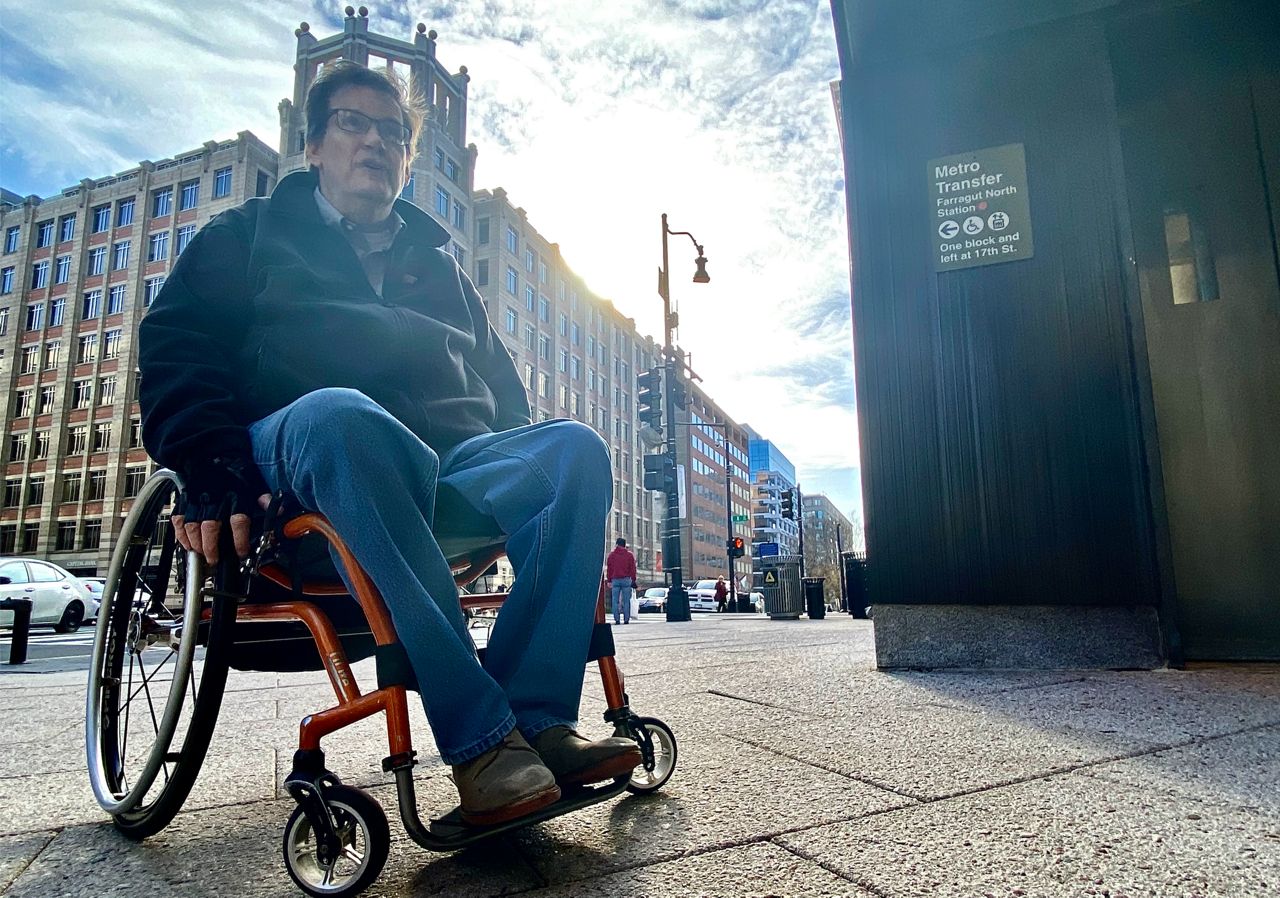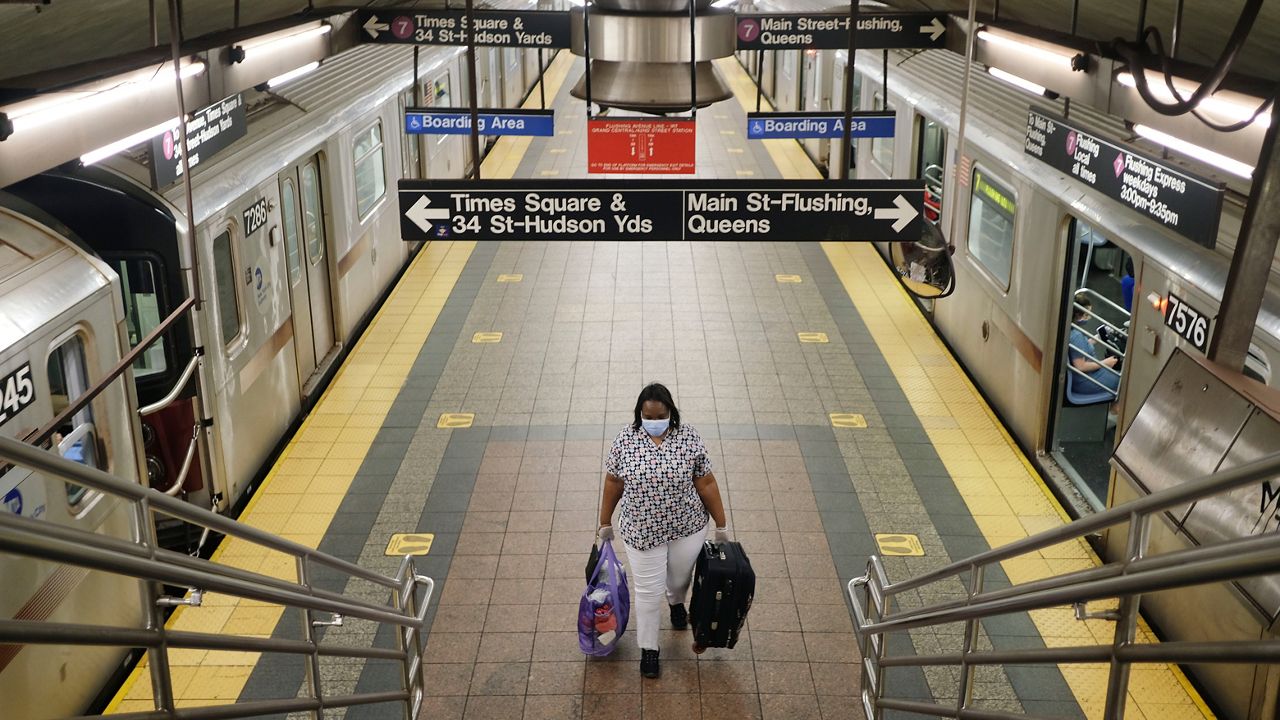Lee Page has been riding Washington’s Metro for more than three decades.
“Washington, D.C. is a very accessible city,” he said from outside a downtown metro station near the White House. “I know where all the elevators are, and where to sit on the train to get to my elevator, the quickest route.”
Page, who uses a wheelchair, accesses the train by first taking an elevator at street level, going through a widened turnstile with his Metro card and then taking one more elevator to the platform before finally doing a “running wheelie,” as he described it, to get inside the metro car.
“There’s a little bit of a gap,” he explained. “That happened to me once where I fell.”

But as one of the newer mass transit systems in the country, Washington’s metro is more accessible than most.
Older systems in cities like New York, Chicago and Boston — called “legacy” rail — are not widely accessible, since many stations were built before the Americans with Disabilities Act (ADA) passed in 1990.
Now, a $1.75 billion investment in the bipartisan infrastructure law that President Joe Biden signed last month aims to bridge the accessibility gap through a new grant program for the more than 920 stations around the country — or 20% of all stations— that don’t meet ADA standards, according to the Department of Transportation.
“Even though we have a law that's been in place for over 30 years, lots of our transit infrastructure was grandfathered in under the law,” said Dr. Beth Mineo, director of the Center for Disabilities Studies at the University of Delaware.
Page has worked to get funding for transit access at the federal level for years as a senior advocate at the Paralyzed Veterans of America, the group that sued D.C.’s Metro in 1978 to make sure the city would build elevators into each station.
He suffered a spinal cord injury from a car crash in 1983 that affected all four of his limbs, and he now works on behalf of veterans and the millions of Americans with disabilities.
“Life is beyond the VA hospital,” he said. “That includes employment, public accommodations, public services — and transportation is the key to everything.”
The $1.75 billion allocated in the infrastructure law falls under a new effort called the All Stations Accessibility Program (ASAP), which will allow transit agencies to apply for grants overseen by the Department of Transportation.
“For these transit agencies that want to do the right thing, they felt like they had so little funding that they had to choose between accessibility and investments in safety,” Transportation Secretary Pete Buttigieg said in an interview with Spectrum News.
“They should not have to choose.”
In New York City, about 25% of stations are compliant with ADA standards. The city has announced a multi-billion project to make all stations accessible by 2034.
Buttigieg is charged with overseeing much of the funding in the infrastructure bill, including the grants for accessible upgrades, which could be used for things like elevators, ramps, lights and audio assistance.
The secretary pointed out that ADA compliant improvements often help the broader community, such as people who use strollers or walkers.
“Any of us, really, who may not identify as part of the disability community today may age into it tomorrow,” he said. “We really need to consider this something that is necessary, not a ‘nice to have,’ not a bonus feature.”
A core concern from the disability community is making sure the funding in the infrastructure bill results in concrete improvements in access in the next five to ten years.
“One of the things we typically say about the ADA is it's an unfunded mandate,” Dr. Mineo said. “It doesn't have a huge army of enforcement officials out there checking up on the world. It depends on people bringing inequities to the attention of public officials.”
And some advocates had called for more money for accessibility projects, including Sen. Tammy Duckworth, D-Ill., a double amputee who has led the effort to get funding for accessible transportation in the bill.
She had first drafted legislation that would allocate $10 billion for transit over ten years, more than five times the amount of money that eventually passed this year.
But Sec. Buttigieg told Spectrum News he sees this year’s infrastructure funding as a critical first step.
“$1.75 billion is a lot of money,” he said. “As we prove the effectiveness of these investments, that'll also make it possible to build momentum for more.”
“We want this to be part of how all of our transportation policy and investments work: designing it on the front end with accessibility in mind, rather than waiting on the backend for there to be a problem,” he added.
A transportation official told Spectrum News that the Federal Transit Administration would develop guidance for the ASAP funding by 2022 and soon after begin taking applications from transit agencies.
They said it’s difficult to estimate the number of stations that will be impacted, because “the cost of specific projects would be based on the unique circumstances of each,” including whether the station is above or underground.






